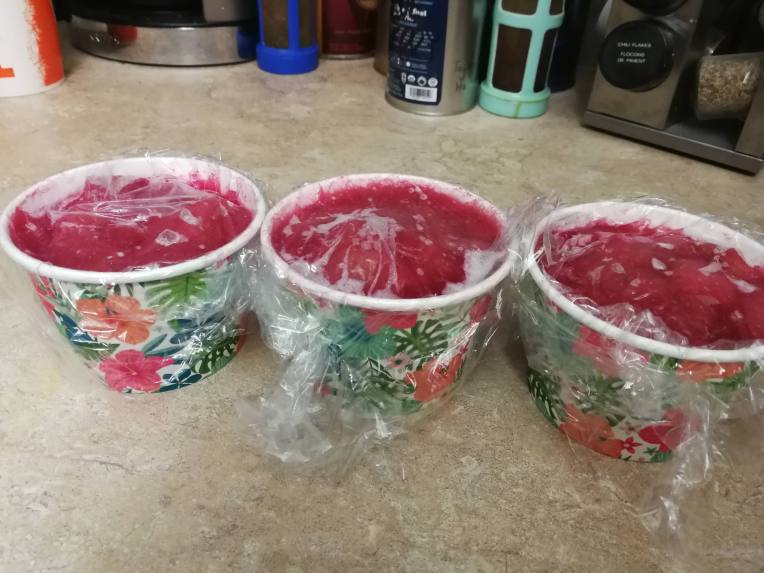One of my goals for my canning this summer is to reduce my fast-food intake during the school year. For me, there are two situations that lead to fast food. The first is the evening rush when teenagers have somewhere to be at 7 and my wife doesn’t get home until 6:30. The second is first thing on a weekday morning when I realize I’m running late, or there are no good leftovers/salad fixings in the fridge, so I stop at a grocery store and grab a sandwich and a yogurt with fruit.
For the first scenario, soup and sandwiches is the perfect solution. Everyone makes their own sandwich, and there’s a pot of soup keeping warm on the stove for the moment when each individual is ready to eat it. But the second situation calls for a completely different approach.
Enter Meals in a Jar.
I’ve frequently used a can of soup from the grocery store to tide over in this instance, but that has some downsides. For one thing, I often don’t love the flavours or textures of canned soup; for another, the cans are often a little too big and can’t be closed to bring them home or store them in the fridge at work.
On Friday, I made a delicious chili that will do this job. Today, I’m making Beef Stew in a Jar. The concept is simple: stewing beef, freshly-made beef broth, garlic and onion, some Montreal Steak Spice Mix, and whatever vegetables I feel like throwing in to each jar.
For a significant nutrition boost, I’m also adding some red lentils, which are the only part of this recipe that poses any type of canning difficulty. More on that in a moment.
For this recipe, I’m using a cold-pack method. That means I’m not blanching or pre-cooking anything except the broth itself. It greatly reduces the amount of work required and does not increase the danger, because you’re going to be boiling the fuck out of it all in the pressure canner for a total of nearly two hours (75 minutes at pressure, plus time it takes to come up to and down from that pressure.)
Step 1: Make your broth. I got some beef bone pieces from my local grocery store, and then followed my recipe for broth. A couple of carrots, the remains of some celery and onions I had around, and a bag of peels from the sweet potatoes I made two weeks ago, and the broth is simmering away happily.
Step 2: When the broth is done, set it aside off the heat to cool for a little while. While that’s happening, deploy your teenagers to peel and chop your selection of vegetables. Today, we’re using turnips, carrots, onions, celery, and green beans. I’m cheating on the carrots and using peeled baby carrots, I’ve left the green beans pretty long, and I chopped the turnip by hand. Everything else is getting run through the slicer on the food processor. Have I mentioned that I love my food processor?
Step 3: Prepare your canner. For a cold-pack recipe, I like to put the water in the bottom and then turn the heat on low so that the water stays warm. I don’t want it boiling, but I want it warmer than room temperature when I start putting jars in it, so I do this first.
Step 4: Line up your jars. I’m cheating on this today; I washed them but didn’t sterilize them beyond that. This is also when you prep your rims and seals so they’re ready to go. I’m using 500mL (pint) jars because that’s the serving size I want.
Step 5: Assemble your stews. This is the fun part, because each jar can be a little different. First, a few cubes of stewing beef, enough to cover the bottom of the jar; then a crushed clove of garlic and some onion; a little bit of Montreal steak spice or some other spice combo that you like with beef; and now you get to have fun.
If you’re using lentils, you’ll need to pay attention to how full you pack the jars. Assume that the volume of lentils you put in is going to at least double during cooking. That means that if you put in two tablespoons of lentils, you need two tablespoons more liquid than you would otherwise have, which means two tablespoons less vegetable. If you don’t do this, some combination of the following dire consequences will ensue:
- The cooking process will push food out under the seal of the jar, which will prevent them from sealing (this is the most likely result.)
- The lentils will not have enough liquid so they won’t cook properly
- You may even explode a glass jar or two inside the canner, ruining the entire batch and quite possibly the canner itself, if not your kitchen
I find a tablespoon of liquid equals about a centimetre of headspace, and I’d rather err on the side of caution in this, so I’m stopping packing my vegetables about an inch lower in the jar than I normally would, and filling up with broth to the one-inch headspace level that I need. Since I’m not using potatoes (my wife doesn’t like them) lentils are a key ingredient for texture; they’ll dissolve and thicken the broth. It’s worth having less of everything else to make sure they cook right.
When you’ve packed the jars with meat, lentils, and veggies, add broth up to the one-inch headspace mark. Apply rims and seals and place in the canner.
Step 6: Bring the temperature in the canner up slower than you normally would. Don’t move it right to high as soon as you put the lid on. You want the food to heat up a little slower than that this time, since we’re starting from a cold pack. A newbie mistake I’ve been making is to heat the food too fast, which forces food out under the seals and prevents sealing. Take it slow. After all, you set aside your entire afternoon to watch this pot boil anyway, right? RIGHT? Well, you should have.
Step 7: Process at 11 pounds of pressure for 75 minutes, then remove from heat and let the pressure come down to standard before opening the canner. The processing time is based on the time needed for the longest ingredient, which is the meat. If you’re using 1L (1 quart) jars, the processing time is 90 minutes.
If you have leftover broth, you can put it in the fridge to use soon, put it in the freezer to use later, or put it in jars to process after the stew is done. It only needs to process for 20 minutes.
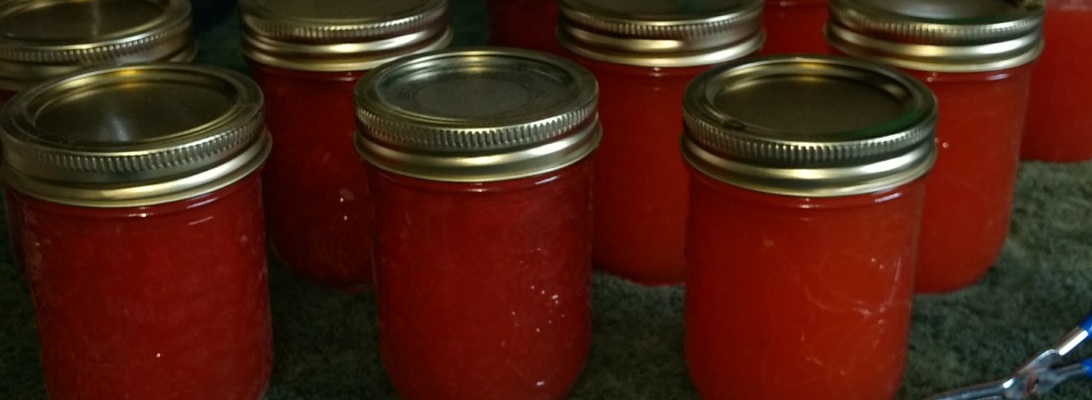
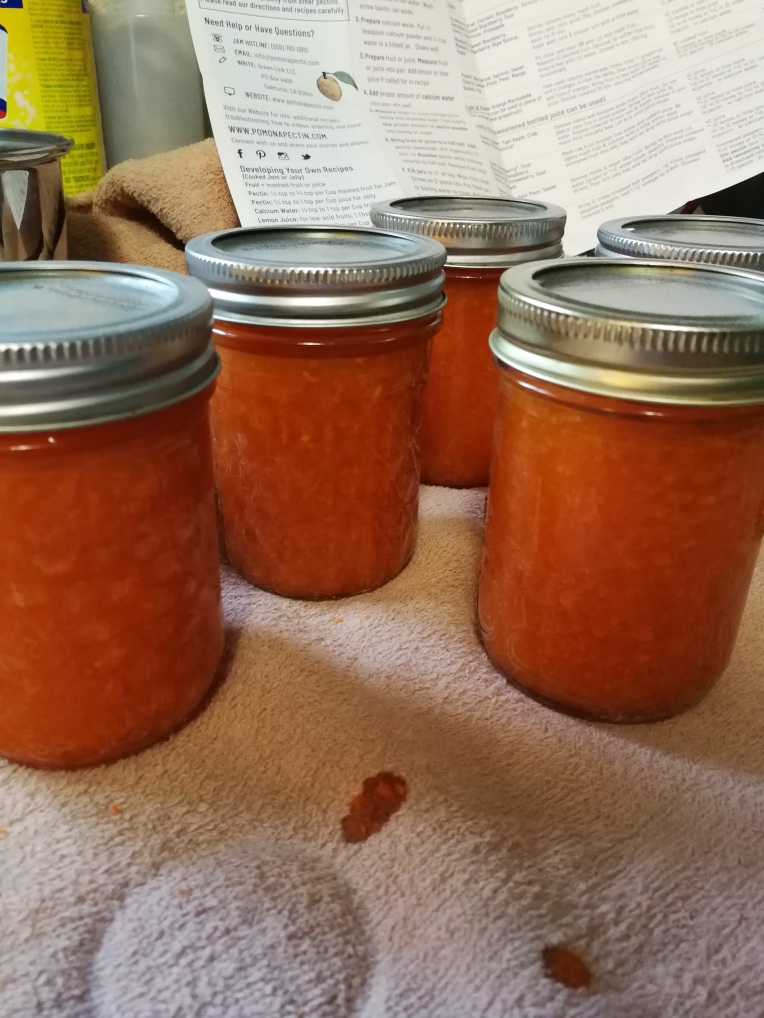

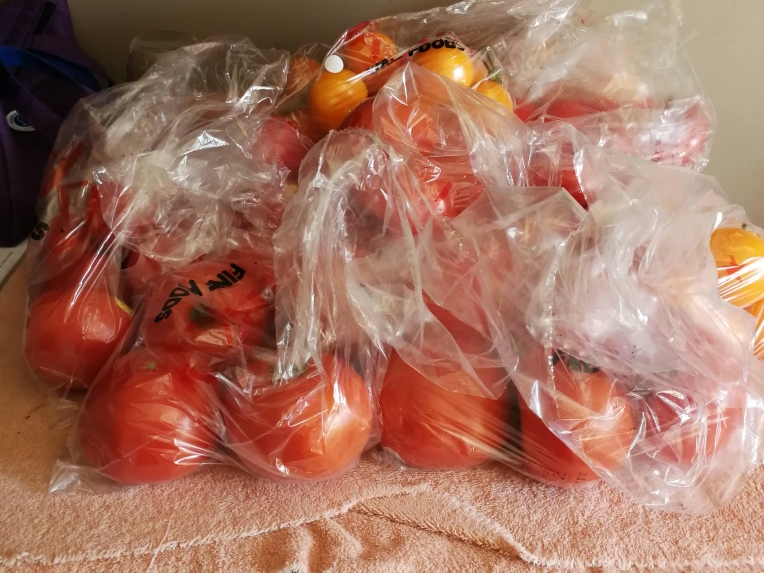
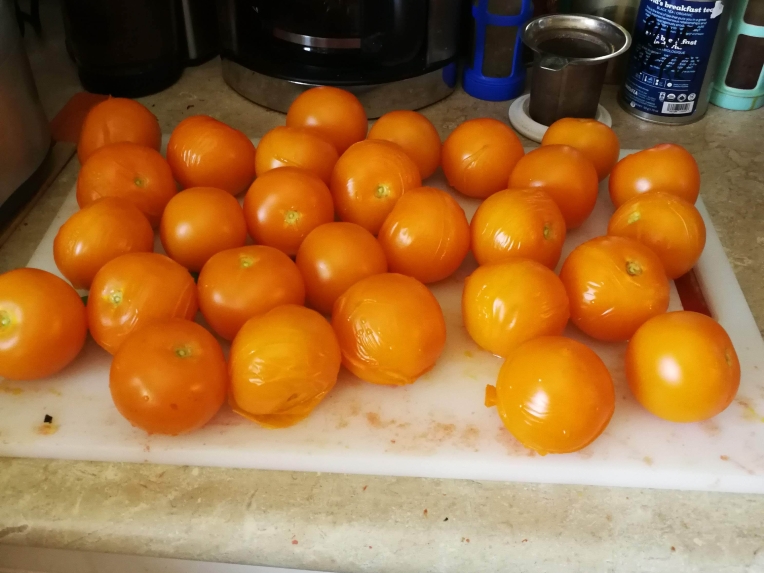
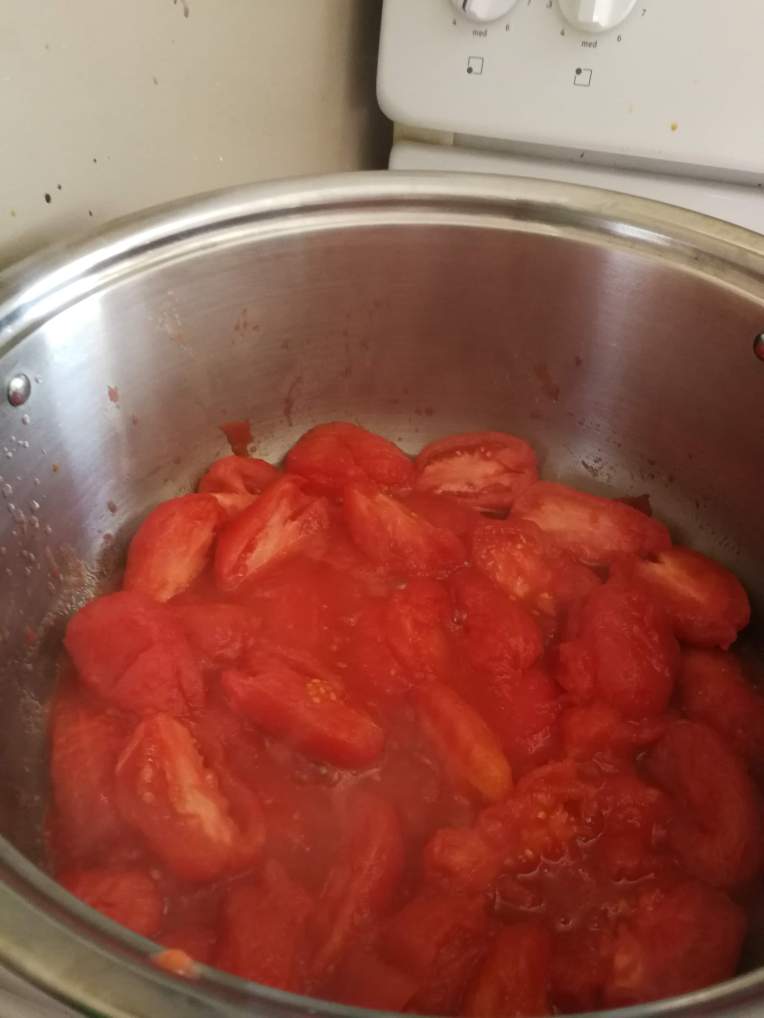
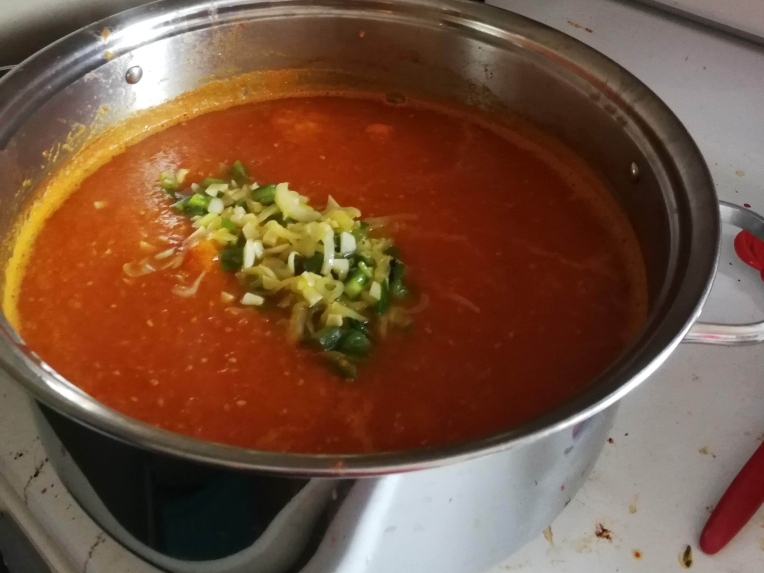
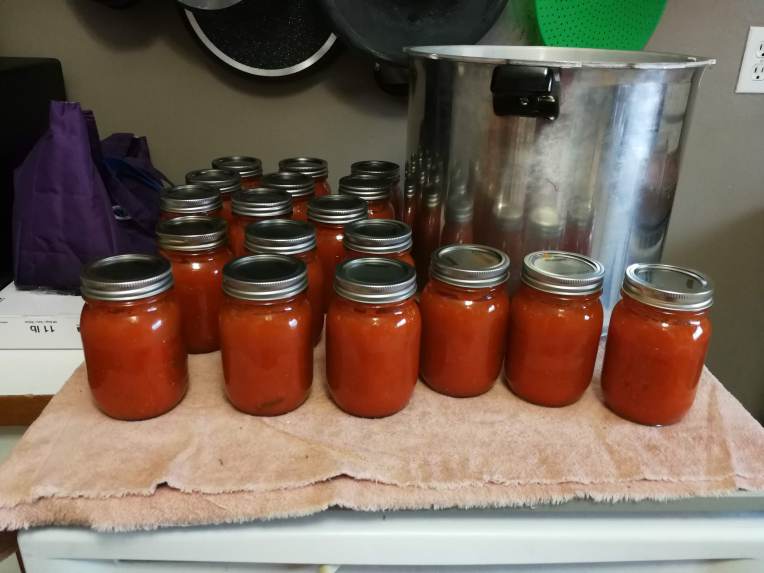
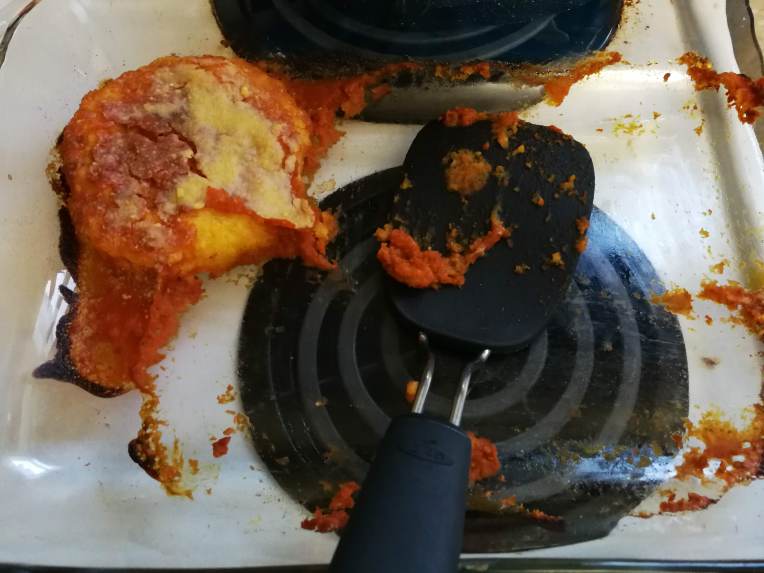
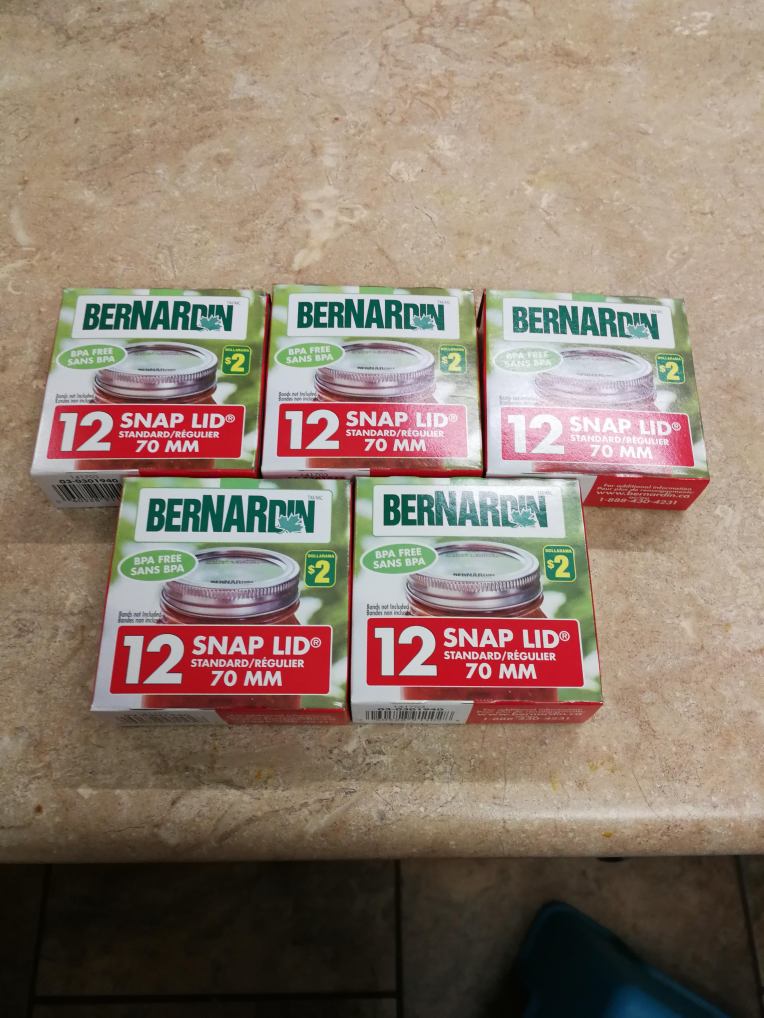 Running out of seals last week was mildly traumatizing.
Running out of seals last week was mildly traumatizing.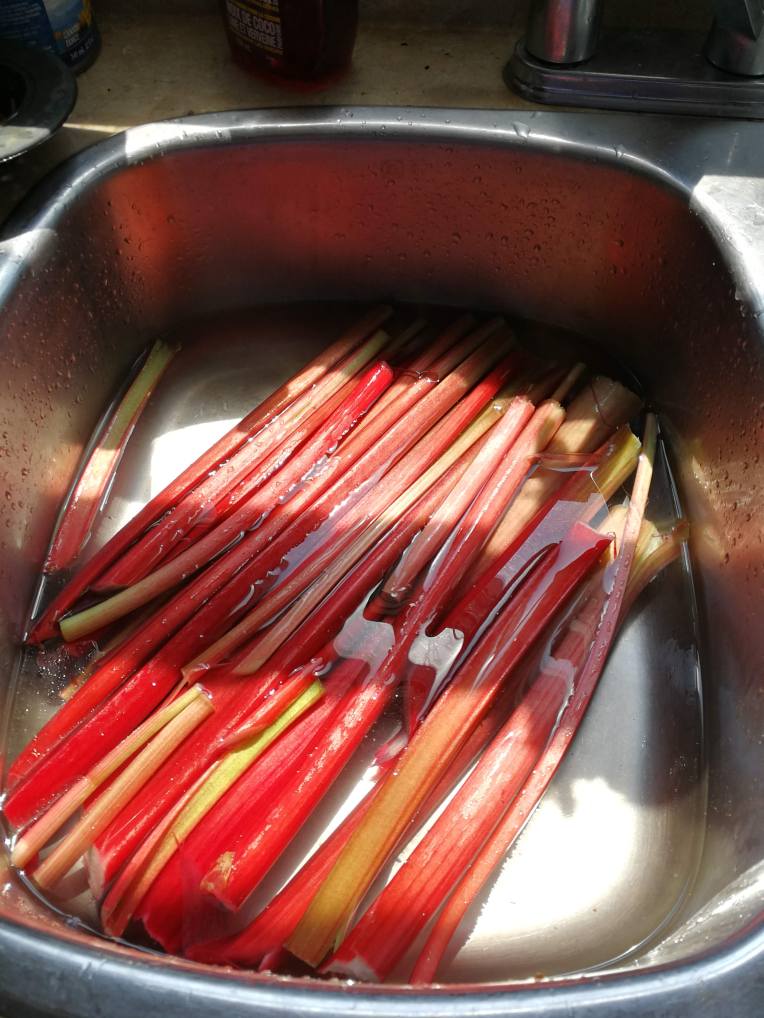 This is about a quarter of what I got this year. Some of the stalks were two inches around.
This is about a quarter of what I got this year. Some of the stalks were two inches around.